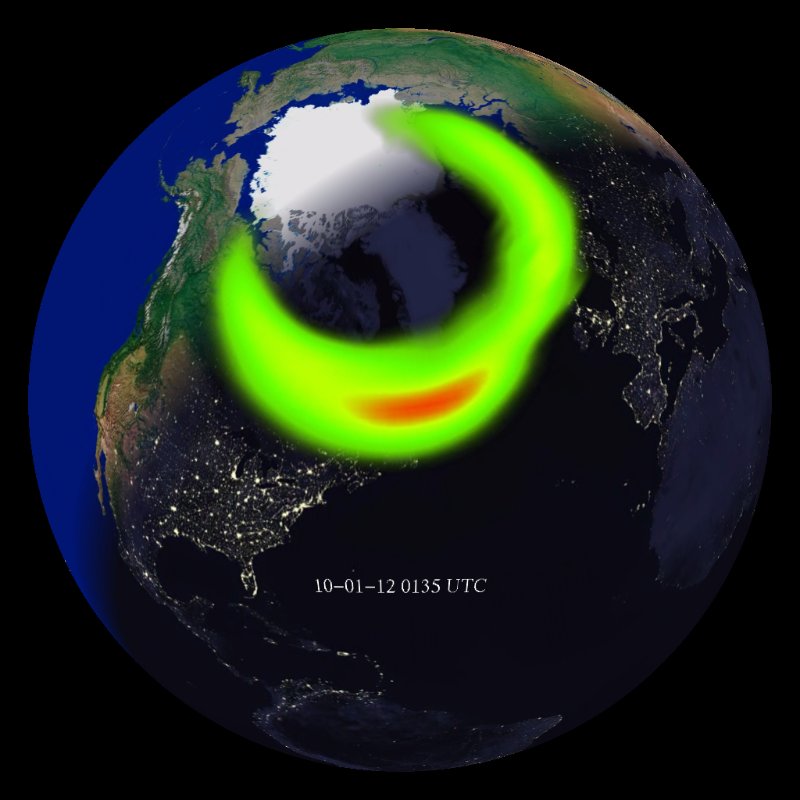Aurora

This model shows where the aurora was expected to occur during storms that happened in the fall of 2012. STEVE often occurs farther south than normal auroras, and can sometimes be seen from southern Canada.
Citizen scientists participating in a project called "Aurorasaurus," discovered a purplish ribbon of light they named Steve.
The purple and green lights are now referred to as Strong Thermal Emission Velocity Enhancement (STEVE), and are a phenomenon similar to their more well-known cousins Aurora Borealis and Australis. STEVE is caused by a ribbon of hot gases rather than particles like electrons and protons like the auroras. The primary sources of space weather are solar flares and associated solar coronal mass ejections. These eruptive events on the sun release photons and energetic particles that collide with Earth and its protective magnetic field, or magnetosphere.
When a coronal mass ejection reaches Earth, it energizes the electrons and protons in the magnetosphere and accelerates them down the magnetic field lines to regions near the North and South poles where the electrons and protons collide with oxygen and nitrogen in Earth’s upper atmosphere. This process excites atoms and molecules which then release visible light in the polar sky called the aurora. Observing the aurora is one of the only ways that we can directly experience space weather. The configuration of the Earth’s magnetic field makes it so aurora borealis and australis (northern and southern lights) are most easily observed in polar regions. However, in the rare case of an intense solar storm, the aurora can be seen almost to the equator.
Download an SOS playlist for this module.

This model shows where the aurora was expected to occur during storms that happened in the fall of 2012. STEVE often occurs farther south than normal auroras, and can sometimes be seen from southern Canada.

This model shows where the Earth's magnetic field is and how it moves over time. Changes in the magnetic field from space weather events can effect how animals navigate and can create electricity that can cause issues for power grids and pipelines.

These images of the sun from September, 2011 were taken by the Solar Dynamics Observatory (SDO) and show sun spots and solar activity as bright active regions.

A series of coronal mass ejections in 2003 caused serious interference with satellite communications, the power grid in Sweden, and caused many auroras.

This dataset shows the sun in near-real-time (up until within a week ago), and shows sun spots and solar activity as bright active regions.